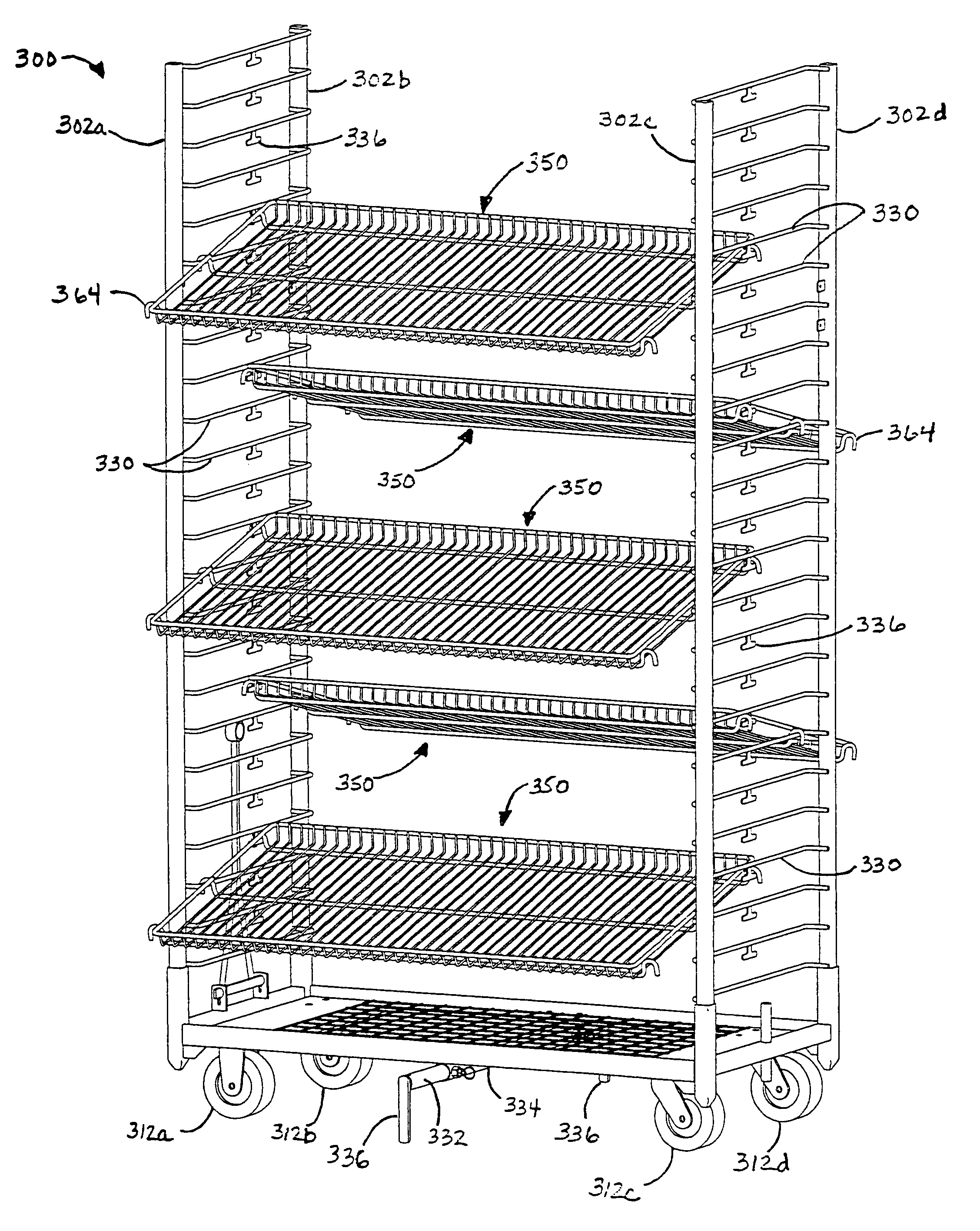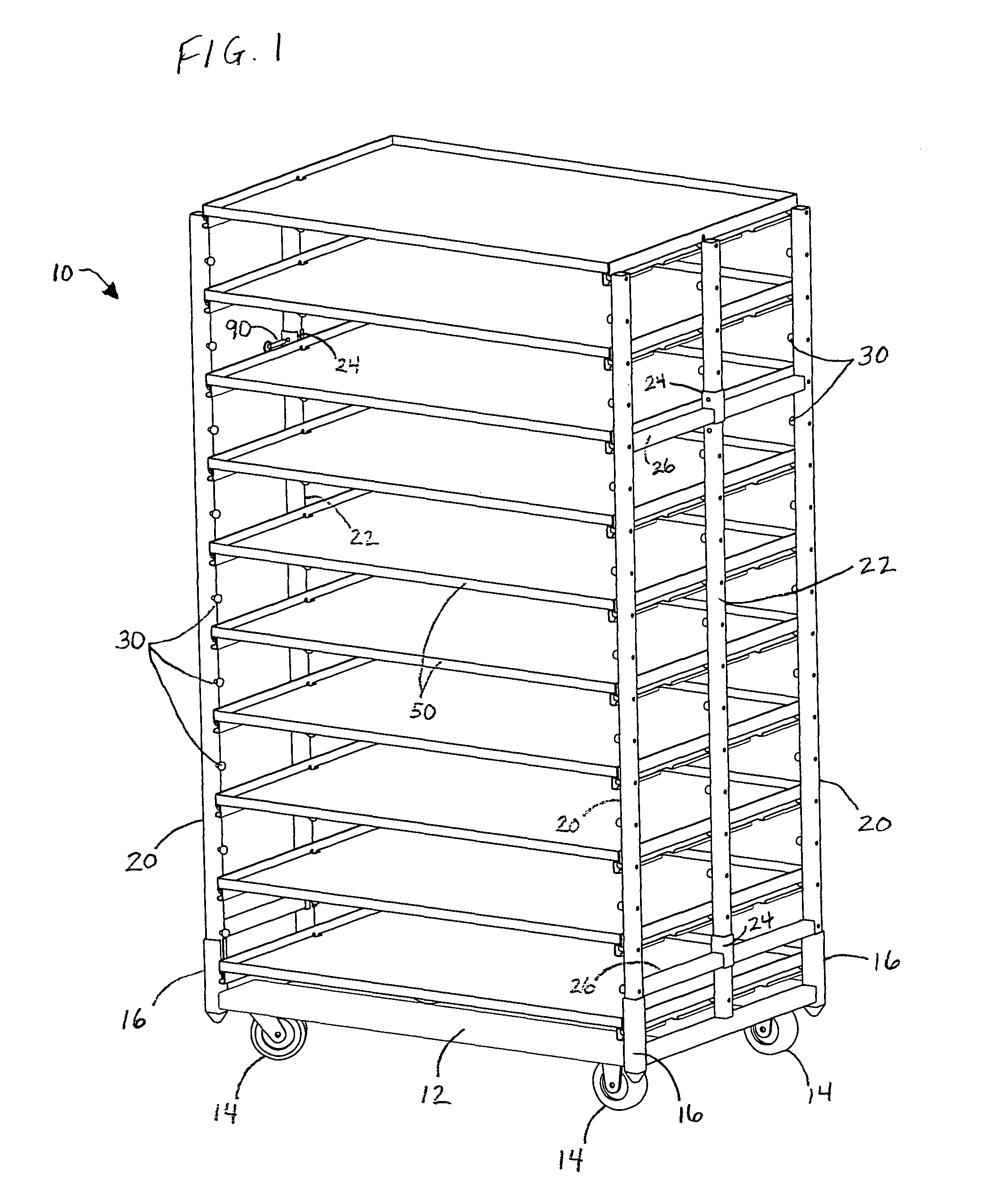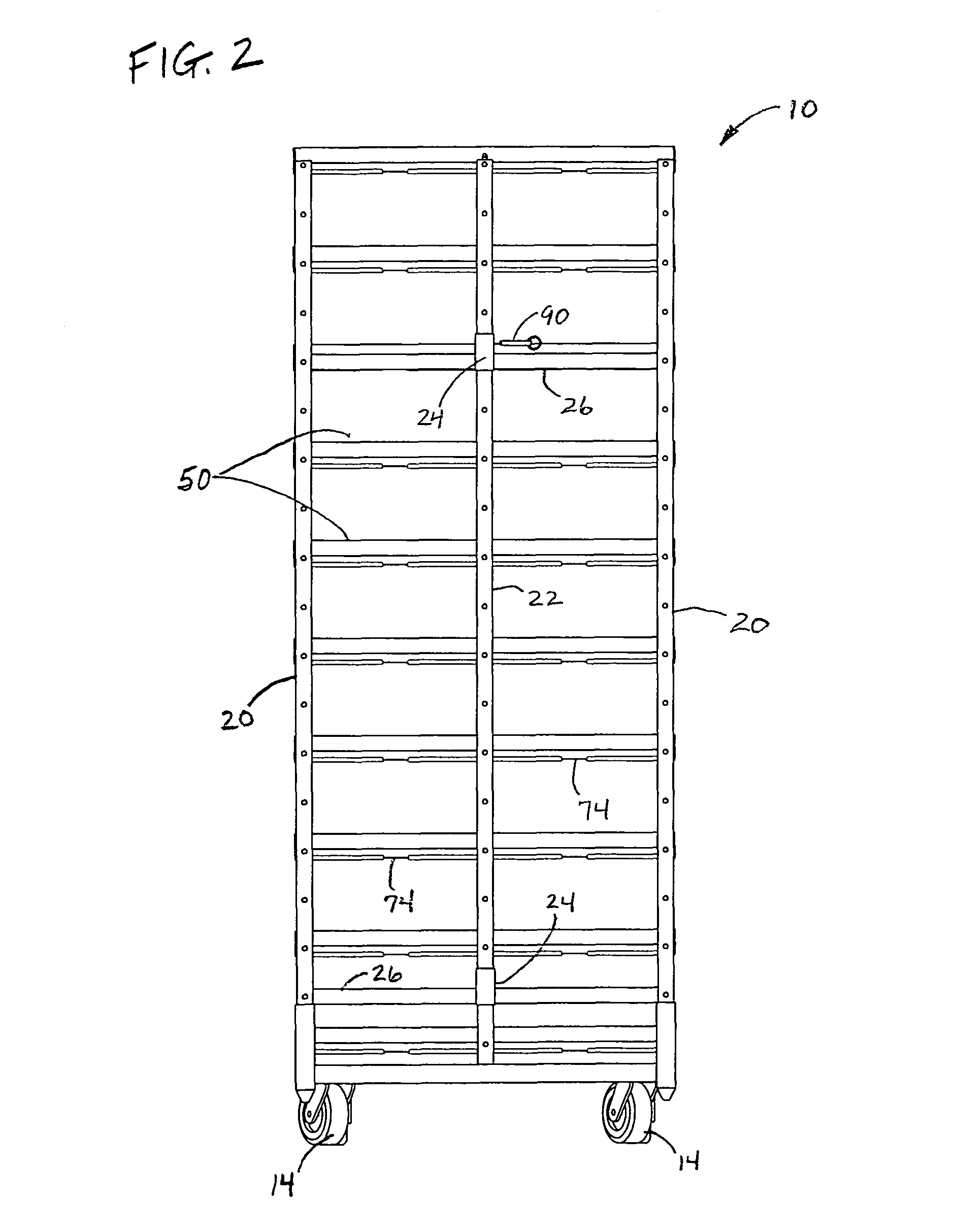Rack for transportation and display of plants
a plant transportation and plant technology, applied in the field can solve the problems of conflicting design requirements that have not been adequately addressed, difficult or even impossible to water or otherwise reach the innermost, and often neglected formers, etc., and achieve the effect of reducing and increasing the number of plant storage racks
- Summary
- Abstract
- Description
- Claims
- Application Information
AI Technical Summary
Benefits of technology
Problems solved by technology
Method used
Image
Examples
Embodiment Construction
[0049]FIG. 1 shows a plant transportation and storage rack assembly 10 in accordance with the present invention. As can be seen, the assembly includes a rectangular base frame 12 that is supported for rolling movement by casters 14. The frame includes vertically-aligned sockets 16 at each of its four corners (three only being visible in FIG. 1), which are suitably formed of square-section metal tubing welded to the rails / cross-members of the base frame.
[0050]The sockets 16 each receive a vertical stanchion or post members 18 in removable, sliding engagement therewith, the post members suitably being formed of square-section metal tubing dimensioned to fit closely within the sockets. The post members are each substantially identical in construction so that they fit interchangeably within the sockets 16, thereby facilitating knock-down and reassembly of the rack.
[0051]The stationary post members 20 are mounted in parallel, spaced-apart pairs at each end of the rack assembly. A third, ...
PUM
 Login to View More
Login to View More Abstract
Description
Claims
Application Information
 Login to View More
Login to View More - R&D
- Intellectual Property
- Life Sciences
- Materials
- Tech Scout
- Unparalleled Data Quality
- Higher Quality Content
- 60% Fewer Hallucinations
Browse by: Latest US Patents, China's latest patents, Technical Efficacy Thesaurus, Application Domain, Technology Topic, Popular Technical Reports.
© 2025 PatSnap. All rights reserved.Legal|Privacy policy|Modern Slavery Act Transparency Statement|Sitemap|About US| Contact US: help@patsnap.com



